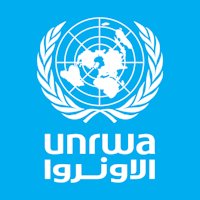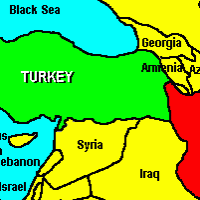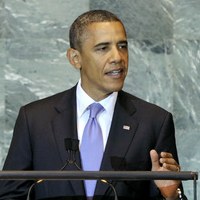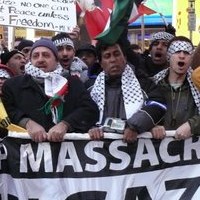![]()
Tuesday, May 19, 2015 | By Rob Harris
The United Nations’ ‘Board of Inquiry’ issued a report to the Secretary General of the United Nations, Ban Ki-moon, in February of this year. He issued a summary of the report’s findings, on the 27th April, which asserts that Israeli military action killed and injured Arab-Palestinian civilians, who had sought refuge in six United Nations schools during the 2014 conflict in Gaza and its environs, between Israel and an assortment of terrorist groups, including Hamas, the ruling authority of the Gaza Strip itself.
Whilst stating that it was standard procedure not to issue such ‘Board of Inquiry’ reports, Ki-moon justified the publication of a summary on grounds of interest. The study was widely reported upon in a prejudicial fashion.
Questions of intent
The report did not make findings of intentionality on the part of Israel. Findings of criminality were noted to be beyond the purview of the UN Board’s report. However, the report recommended that Israel take greater care in future conflicts, suggesting a belief that the strikes were conducted in error:
“The United Nations should request the Government of Israel to give a commitment that, in the event that it plans any future military operation in proximity to United Nations premises, it will provide advance warning, sufficient to enable the United Nations to ensure the security and safety of its personnel or other civilians attending its facilities, and ensure that coordinating procedures are such that confusion or misunderstandings concerning UNRWA as well as other United Nations installations are excluded.” (99, C)
The response to the UN summary was rather predictable, with numerous media outlets describing the incidents as actual “attacks” causing death and injury to Arab-Palestinians in seven (rather than six) UNRWA schools. The report also found that unidentified terrorist groups used several schools to store weapons, and to fire from those sites. This was a notable revelation but some media outlets emphasised that the report found the schools used in this manner were empty at the time. Institutions treating the story in this manner include Al Jazeera and Irish public service broadcaster RTE. Intent, on the part of Israel, to harm and kill was unfairly inferred, while the more probable intent of the relevant terror groups was minimised.
The notion that the IDF intended to attack is hard to justify, in view of the fact that all seven incidents did not constitute protracted attacks. Several involved a single strike, typically with a non-precision guided shell, in environments where fighting had taken place. Extracts of the incidents detailed in the report are quoted:
“Incident (a): Injuries occurring at and damage done to the UNRWA Maghazi Preparatory Girls “A/B” School on 21 and 22 July 2014” […] the school was struck at roof level by direct fire from an IDF tank, likely involving a 120 MM High-Explosive Anti-Tank (HEAT) Multi- Purpose (MP) or High Explosive (HE) projectile. Injuries were caused to a man and a child sheltering at the school, as well as damage to the school premises.
The following day, two mortars hit the roof of the school after its evacuation, causing no injury.
“Incident (b): Injury occurring at and damage done to UNRWA Deir El Balah Preparatory Girls “C” School on 23 July 2014 […] Between 05:45 and 06:15 hrs in the morning of 23 July 2014, the medical isolation room on the third floor of the school was hit by a projectile, which passed through a window and two walls of an elevator shaft, partially striking the external veranda wall and exiting the school grounds. Three displaced persons, among the approximately 40 sleeping in the room at the time of the incident, suffered light injuries. No one was killed. There was relatively minor damage to the school.”
Incident (c) relates to the graver event involving fatalities at Beit Hanoun. It is discussed in some depth in the sub-section “On the veracity of testimony”.
“Incident (d): Injuries occurring at and damage done to Zaitoun Preparatory Girls “B” School On the night of 28/29 July 2014 […] On 29 July, at approximately 01:30 hrs, a projectile struck the roof of the school, penetrating the ceiling and striking the wall immediately adjacent to the door of a classroom in which approximately 40 people were sleeping. Seven residents were injured.”
Incident (e) relates to a graver event, involving fatalities, at UNRWA Jabalia Elementary Girls “A” and “B” School, on the 30th of July. The report notes that a volley of four shells struck the school: “At approximately 04:45 hrs, the school was hit by a barrage of four 155 MM high explosive (HE) projectiles, an artillery indirect fire weapon.” The IDF did not deny the strike, and have ordered an investigation. They stated the fire was aimed at another more legitimate target. Credence may be given to this claim because the report acknowledges the ordinance which struck the school is used in indirect fire weaponry that aims at targets that are not in direct sight.
Incident (f) involves the deaths of civilians at UNRWA’s Rafah Preparatory Boys “A” School on the 3rd of August. A single precision-guided missile struck the road outside the school. The IDF acknowledged responsibility for the killings, but claimed the deaths were caused in error while it was pursuing three Islamic Jihad fighters on a motorcycle, who were passing by the school gate. The UN report agreed with this assertion, stating “The Board found that the missile had been directed at a motorcycle carrying three individuals.”
Incident (g) of the report noted more extensive damage done to UNRWA’s Khuza’a Elementary College Co-educational “A” and “B” School, between the 17th of July and the 26th of August. However, the buildings on the site were empty, and the IDF found material that suggested it had been used as an Islamic Jihad command centre and observational post for a period of time. The UN report did not contradict this perspective in its findings.
Issues of balance
Whilst the UN ‘Board of Inquiry’ report is more balanced than might be expected, given the UN’s prejudicial treatment of Israel in recent decades, it is nonetheless problematic for a number of reasons.
As previously noted, the report was only released as a summary. There are no plans to ever have the two hundred and seven page study published. It is clearly problematic for any major agency to publish findings that are not fully substantiated. It is near-impossible to substantiate why the UN Board found all the incidents to be attributable to the IDF, when there is noteworthy evidence to the contrary.
If the decision by the UN Secretary General, Ban Ki-moon, to publicise details of the report, was motivated by public interest, it would surely have been convention to issue the report in its entirety, in order to allow readers to evaluate its findings. Such a move would have been in the interests of the UN, assuming the findings were based upon secure evidence. The decision to instead issue a summary would have likely been motivated by two primary considerations: either some of the report’s findings are based on contentious claims, or some evidential material not included in the summary would have worsened its relationship with Hamas. Ban Ki-moon stated in his covering letter that the actual report:
“…contains a significant body of information the disclosure of which would prejudice the security or proper conduct of the Organisation’s operations or activities.”
The ‘United Nations Relief and Works Agency for Palestine Refugees in the Near East’ (UNRWA) is of course the principle UN “Organisation” operating in Gaza. In the past, UNRWA’s Gazan branch has been criticised for politically modifying its position, to be in line with the wishes of Hamas. One issue of note was the controversial decision to back-pedal on the decision to teach the Holocaust in its school curriculum, due to Hamas’ objections based on an outright denial of the event!
It would not be unfair to suggest that Hamas has long kept UNRWA on a short leash. Despite the fact that UNRWA members often demonstrate support for Hamas, and it is accepted that many UNRWA employees are Hamas members, grave threats against UNRWA staff at gunpoint are not unknown. Thus, if the full report was redacted over security concerns, it is reasonable to infer that the summary may give a somewhat partial position.
The report relied to a substantial extent on UNRWA witness testimony, where there would have been a desire to downplay the involvement of some UNRWA employees with Hamas, and/or UNRWA failings to secure its own civilian structures to prevent their usage by combatants. A gloss was also placed on some of UNRWA’s more objectionable actions. The report asserts that the UNRWA did not hand weaponry stored at UN facilities to Hamas, but were in fact handed back to unnamed individuals, after contacting the Hamas-run police force.
The UN summary notes the contribution of unnamed non-governmental organisations to the report’s findings. Such organisations typically present a prejudicial image of the conflict in analyses.
The summary findings are also rather inconsistent. Ban Ki-moon asserts that the three schools used by belligerents for the storage of weapons were not in use. This was fortuitous, since the war occurred during school summer recess, as noted in the summary. However, it nonetheless appears that some schools may have not been wholly disused at the time, with the admission that the grounds of one school, where a terrorist group fired rockets, was open for usage by children.
On the veracity of testimony
The report also relied on anonymous non-UNRWA witness testimony, often obtained by UNRWA staff themselves. The neutrality of such staff can be questioned, due to the sympathy and affiliation of some with Hamas. Such a situation would possibly lead to selection bias, with the picking of witnesses that provide accounts favourable to Hamas’ agenda. Moreover, testimony obtained in an oppressive intimidatory environment is problematic, where reprisals against critics are not uncommon.
To take one example, the report blames Israel for perhaps the most infamous strike on a school during the war, at Beit Hanoun, which led to the death of 12 to 14 civilians, despite evidence that terrorist groups were fighting in close proximity to the school, and may have struck it. The summary notes that there was fighting very close to the school for several days, and also notes the repeated warnings from the IDF to UNRWA, to evacuate the compound over a three day period, with terrorist fighters acting in an area in very close proximity to the school:
“The Board noted that most witnesses described shelling in the vicinity of the school as a daily occurrence and that some of the residents at the school were injured as a result of shrapnel from the shelling outside the school. The Board also noted that an UNRWA security official testified to having received multiple calls from Israel’s Coordination and Liaison Administration (CLA) during the three or four days prior to the incident indicating that, according to the IDF, rockets were being fired from and around the school and that it needed to be evacuated. On the other hand, the Board noted that witnesses interviewed by UNRWA had said that there was no militant activity either inside or in the near vicinity of the school, though rocket launching could be heard from areas further away.” (Section C, number 27)
The report notes these contradictions but the authors of the summary and/or report appear to place greater weight on subsequent witness testimony that denies these strongly fact-based assertions, due to its conclusion: “The Board found that the incident was attributable to the IDF.” The shaping of witness testimony is a crucial strategy for dictatorial entities. Significant effort has to be made to protect witnesses against illegitimate threatening influence, to obtain accurate views in such regions.
The report also contradicted a prior public statement by UNRWA, which asserted that a Hamas rocket hit the school in Beit Hanoun, making its conclusions harder to accept.
UNRWA complicity with belligerents
The report summary contains a passage that discreetly acknowledges wrongdoing on the part of some UNRWA staff:
“The United Nations should request the Government of Israel to give a commitment that, at any time that it believes it has information that United Nations premises have been misused for military purposes or that UNRWA staff are involved in militant activities, such information will be promptly conveyed in strict confidence to the senior management of UNRWA or other United Nations entity…” (99, b)
In another incident, three IDF soldiers were killed, with seven others wounded, in a heavily booby-trapped UN clinic that was situated on top of a Hamas tunnel. The scale of the endeavour may suggest that there was some level of complicity between certain UNRWA staff and Hamas or Islamic Jihad. Unfortunately, this serious incident was not investigated by the UN Board of Inquiry.
A broader perspective
To place the scale and number of strikes on Gaza’s schools in some perspective, three of the strikes resulted in serious harm to the civilian populace of Gaza. Two of these incidents appear to be attributable to Israel, with a combined death toll of approximately 30 individuals, but were carried out in error. The other incident at Beit Hanoun may have involved Hamas. Of the other four incidents, one caused substantive damage while a school complex was known to be empty, and the other three caused injury to a modest number, and relatively minor damage. The responsibility for these events is disputed.
According to UNRWA’s own figures, Gaza’s education infrastructure is considerable. There are 640 schools in Gaza, 221 of which are run by UNRWA, which in total serve approximately 450 thousand students. According to the World Health Organisation, illiteracy among Gazan youth was less than 1% in 2010, while the Gaza Strip plays host to five universities. By contrast, in neighbouring Egypt, the adult illiteracy rate is over 20%.
Rob Harris contributes articles to several websites on contentious political issues (not to be confused with the popular English novelist (1957-) of the same name). He blogs at eirael.blogspot.com. He lives in Ireland. For all the exclusive blog entries by Rob Harris, go here.



 RSS
RSS











[…] to the findings of the UN Board of Inquiry report into the incidents at seven UN schools. This is a wholly misleading assertion, as the report does not make findings of intent to harm and kill in the schools inspected. In fact, […]
[…] civilian installations, which the UN report, although prejudicial in its own right, does not itself ascribe to Israeli […]